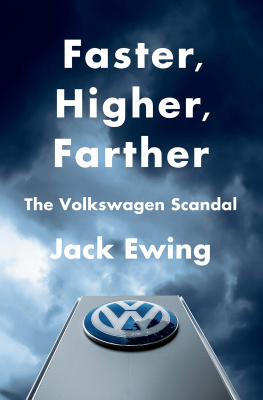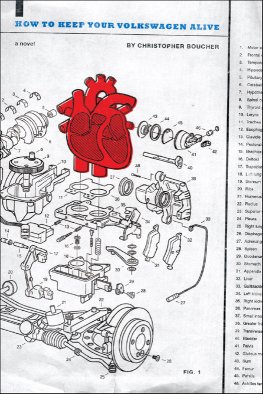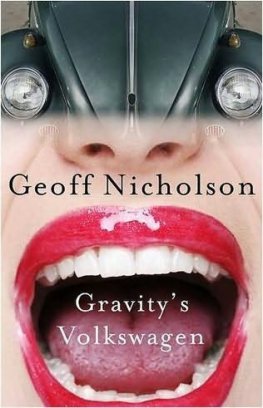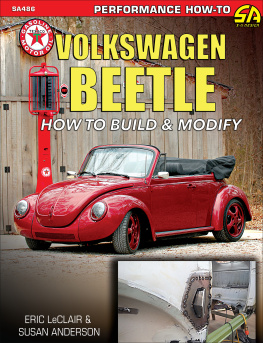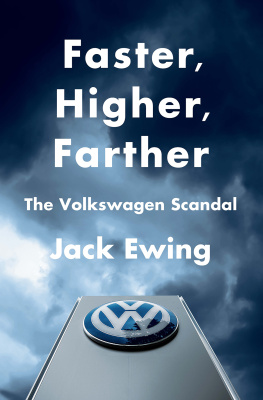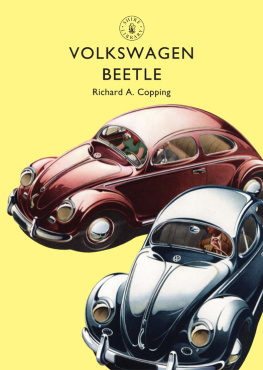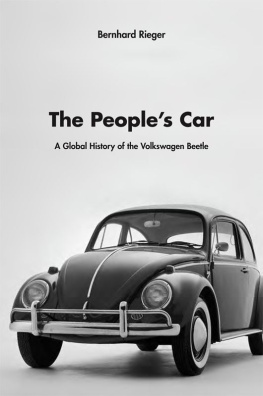
Faster,
Higher,
Farther
THE VOLKSWAGEN SCANDAL
JACK EWING

W. W. NORTON & COMPANY
Independent Publishers Since 1923
New York | London
Copyright 2017 by Jack Ewing
All rights reserved
First Edition
For information about permission to reproduce selections from this book, write to Permissions, W. W. Norton & Company, Inc., 500 Fifth Avenue, New York, NY 10110
For information about special discounts for bulk purchases, please contact W. W. Norton Special Sales at specialsales@wwnorton.com or 800-233-4830
Book design by Chris Welch Design
Production manager: Julia Druskin
JACKET DESIGN BY PETE GARCEAU
JACKET IMAGES: AKOS STILLER / BLOOMBERG VIA GETTY IMAGES; (CLOUDS) KAZAKOV / ISTOCKPHOTO.COM
ISBN: 978-0-393-25450-1
ISBN 978-0-393-25452-5 (e-book)
W. W. Norton & Company, Inc.
500 Fifth Avenue, New York, N.Y. 10110
www.wwnorton.com
W. W. Norton & Company Ltd.
15 Carlisle Street, London W1D 3BS
To my father, whose lifelong engagement with the
environment informs every page of this book.
CONTENTS
1937 | The Nazi labor front founds a company to build a peoples car or Volkswagen. The familiar circular VW logo is designed by Franz Xaver Reimspiess, a motor specialist in Ferdinand Porsches design bureau. |
1965 | Volkswagen buys Auto Union from Daimler-Benz. |
1969 | Volkswagen merges Auto Union with NSU Motorenwerke to form Audi. |
1986 | Volkswagen acquires SEAT, state-owned Spanish automaker, with which it has already been jointly building cars. |
1991 | Following the fall of communism in Eastern Europe, Volkswagen acquires Skoda from the Czech government. It becomes the companys budget brand. |
1998 | In an attempt to move up market, Volkswagen buys British luxury car maker Bentley Motors, Italian sports car maker Lamborghini, and moribund luxury brand Bugatti. |
2008 | Volkswagen becomes majority shareholder in Swedish truck maker Scania. |
2011 | Volkswagen acquires a majority in German truck maker MAN. |
2012 | Volkswagen acquires Porsche, the sports car maker with which it has long cooperated. The deal leaves the Porsche and Pich families with a majority of Volkswagens voting shares. |
2012 | Volkswagen buys Italian motorcycle maker Ducati. |
2015 | For the first time, Volkswagen sells more vehicles than Toyota and becomes the worlds largest carmaker. |
(Members with the greatest influence on Volkswagen history)

Faster,
Higher,
Farther
T HEY WERE A CURIOUS SIGHT , the graduate students from West Virginia University, barreling down California freeways in the spring of 2013. The back end of their car, a Volkswagen Jetta station wagon, sprouted a tangle of pipes and hoses held together with hardware store clamps and brackets. Flexible tubes sucked exhaust from the tailpipes and fed the gas into a mysterious gray box sitting on a slab of plywood in the cars rear cargo area. The box had wires and cables coming out of it. Next to the box, bolted to the plywood, was a Honda portable generator, which stank and made an infernal racket. The students, Hemanth Kappanna from India and Marc Besch from Switzerland, tolerated the noise and the fumes. They had to. The generator was needed to power the whole mess.
People stared. They were questioned by a curious cop. The improvised equipment broke down often. The generator wasnt made to be bumped around so much and needed to be replaced, slowly draining the modest $70,000 grant that West Virginia University had received to fund the research by Kappanna and Besch and another student, named Arvind Thiruvengadam. After one breakdown, Besch and Thiruvengadam spent much of a night in the parking lot of a big-box home improvement store, trying to get the rig to function right again. But the work the students were doing was importantmuch more important than they could possibly have imagined at the time. They were testing the Jettas emissions. In particular, they were testing for nitrogen oxides, a family of gases with a wide array of fearsome effects on human health and the environment. Nitrogen oxides cause children to get asthma and provoke attacks in people who already have asthma. They cause chronic bronchitis, cancer, and cardiovascular problems. Excess nitrogen oxides in urban areas have been known to produce spikes in the number of people coming to hospital emergency rooms with heart attacks. Members of the nitrogen oxide family contribute to acid rain and are far more potent, pound for pound, than carbon dioxide as a cause of global warming. Nitrogen oxides also react with sunlight to produce the smog that smothers urban areas, especially Los Angeles, where the students spent much of their time. With its automobile culture, abundant sunlight, and bowl-shaped topography, Los Angeles is an ideal caldron for smog. Thanks largely to nitrogen oxides, LA has the worst air of any city in the United States.
The reason the students were testing a Volkswagen Jetta was that it was one of the few vehicles available in the United States with a diesel motor. They also tested a diesel Volkswagen Passat and a diesel BMW SUV under the supervision of Dan Carder, head of West Virginia Universitys Center for Alternative Fuels, Engines, and Emissions, or CAFEE, which is famous for its expertise in measuring and analyzing what comes out of a tailpipe. Diesels make more efficient use of fuel than gasoline-powered cars and produce less carbon dioxide. But they also produce far more nitrogen oxides. Thats because diesel ignites at higher temperatures than gasoline. The heat turns the inside of a diesel engine into a veritable nitrogen oxide factory, combining nitrogen and oxygen from the atmosphere to form malignant nitrogen oxide molecules.
Volkswagen claimed that the Jetta and Passat were clean diesels. They were equipped with technology that was supposed to scrub nitrogen oxides out of the exhaust. The German automaker had spent millions of dollars trying to convince Americans that diesels were an environmentally friendly alternative to Toyotas hybrid technology. Thats not what the students from West Virginia University were seeing, though, as they drove around Los Angeles and San Francisco and even up to Seattle. One student was at the wheel while the other sat in the passenger seat with a laptop computer, monitoring the data. Even an expert might have been puzzled by the sight of them. Technology to measure emissions on the road had been around since the 1990s, but it was rarely used for passenger cars. Government regulators preferred to test cars in laboratories, where it was much easier to control all the variables, like barometric pressure or air temperature, that can influence emissions output. The work that the students were doing wasnt exactly revolutionary, but it was unexpected.
The Jetta and Passat emissions were fine when the West Virginia crew tested them on rollers in a specially equipped garage borrowed from the California Air Resources Board, the states clean air enforcer. But when the students took the Jetta out on the road and hooked up their gear, the Jetta started producing nitrogen oxides in quantities that were off the charts. In fact, the Jetta was producing way more nitrogen oxides than a modern long-haul diesel truck. The Passat was better, but still far above the legal limits. The BMW performed fine, except during a few demanding uphill climbs.
Next page
